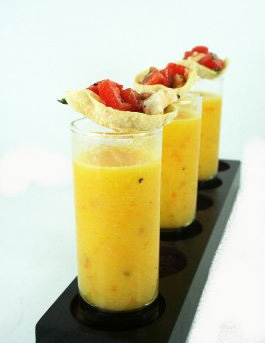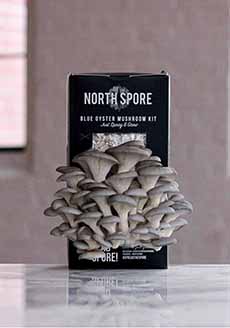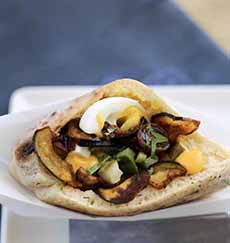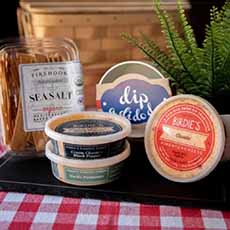|

[1] One of the best Silvaner wines from Germany (photo © Shop Banquet).
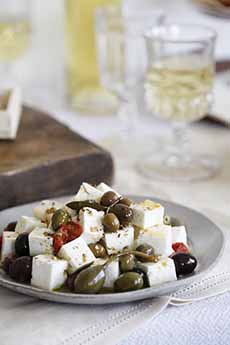
[2] Sylvaner is delicious with antipasto, cheese and olives, among many other foods noted below (photo © Vermont Creamery).

[3] The best Sylvaner from Alsace—the region spells the wine with a “y” instead of the “i” used in Germany (photo © Domaine Haegi).

[4] Pair Sylvaner with raw seafood like sushi and oysters, as well as grilled fish and shellfish (photo © Lognetic | Dreamstime).
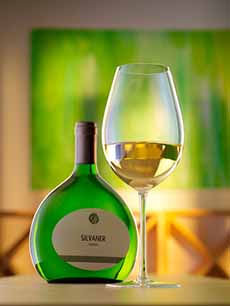
[5] The bocksbeutel bottle, a flask shape, is used for Silvaners from the Franconia region of Germany (photo © Bottle Stops).
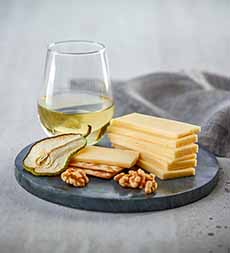
[6] Serve Sylvaner with a cheese plate (photo © Wisconsin Cheese).
|
|
For National Wine Day, May 25th, how about trying a new grape varietal? Our recommendation is Sylvaner, a white wine grape grown primarily in Alsace and Germany. It’s spelled Silvaner in Germany, and as appropriate, we’ll alternate the spellings in this article.
These refreshing wines are ready to fill your glass as an alternative to Pinot Grigio and rosé, America’s unofficial wines of summer.
Many American wine drinkers haven’t even had better-known German and Alsatian wines such as Gewürtztraminer, Pinot Blanc and Riesling. We highly recommend them as well, but today our focus is on Sylvaner.
THE HISTORY OF SILVANER WINE
Silvaner is an ancient grape varietal that has long been grown in Central Europe. It is believed to have originated in Transylvania, in the Austrian Empire*.
Widely cultivated in the Middle Ages, Silvaner was brought from the Austrian Empire to Germany, where it was embraced. From there, the grape was brought to the Alsace region of France, where it took well to the terroir†.
After World War II, so much Silvaner was planted in Germany and Alsace that overproduction resulted in lower-quality wines and ruined its reputation. In Germany, it was often used as a blending grape in wines like Liebraumilch—not exactly prestige wine.
Changing tastes in the Franconia region of Germany even resulted in the Silvaner vines being pulled up in favor of dry white wines.
Like the phoenix, Silvaner has risen from the ashes. Today’s wine makers in both Germany and Alsace are vinifying Sylvaner into delightful wines that are very affordable and vinified in dry, semi-sweet and sweet styles.
Some exceptional wines are now produced on good vineyard sites with low yields. In 2006; Zotzenburg Sylvaner became the first to be designated an Alsace Grand Cru. Grown on a soil of marl-limestone, the wines have great finesse and body, and age wonderfully. All for around $20 a bottle!
Today, this white wine grape has been called a “blank canvas for the expression of terroir†” [source]. It can produce elegant wines with high acidity, and pairs very well with a wide variety of foods (see below).
SILVANER / SYLVANER WINES TO SEEK OUT
German Silvaner
The Rheinhessen region, which lies to the west of Frankfurt, is the largest of Germany’s 13 wine appellations. It has the largest Silvaner acreage.
Two of the region’s top producers are Wittmann (photo #1) and Schätzel: wines with brisk, fresh leafiness in the manner of Sauvignon Blanc.
Also check the Baden appellation in southwestern Germany, where the Kaiserstuhl viticultural district produces wines with delightful green notes.
In the state of Bavaria, in the district of Franken (Franconia), Silvaner is a specialty of the region. The wines are dry and full-bodied with a mineral undercurrent.
Bavarian Silvaners have an unusual bottle shape, called a bocksbeutel (photo #5). It’s flat, squat and wide, like a flask (similar to the classic Mateus rosé bottle).
Look for Sylvaner from Bürgerspital, Julius Spital, Weingut Bickel-Stumpf, Weingut Hans Wirsching, Weingut Rudolf May, Weingut Sauer and Zehnthof Luckert.
Alsatian Sylvaner
In Alsace, Sylvaner takes on a different character: They’re richer than their German counterparts, with honey and melon notes.
Look for wines from the Zotzenberg Grand Cru (photo #3), where there are several fine producers. But also sample other Silvaners from Hugel and Trimbach.
SYLVANER FOOD PAIRINGS
Sylvaner is a great pairing wine, not just for the foods below, but with picnic fare. Also serve it with:
Antipasto
Asian cuisine
Asparagus
Artichokes
Cheese
Cream sauces, mayonnaise
Crudités
Desserts (sweet or semi-sweet bottlings)
Deviled eggs
Foie gras
Fried food
Fondue
Gnocchi
Grilled fish, smoked fish
Hot dogs and sauerkraut
Mushroom omelets, onion tarts, quiche
Onion soup
Pasta with pesto or cream sauce
Roast chicken, pork, turkey
Shellfish (lobster, oysters, shrimp, etc.)
Salads
Sausages
Sashimi and sushi
Sautéed veal, veal chops
Tapas
Find more matches here.
And if you have any “leftover” wine, use it for deglazing the pan for sauce, or other cooking applications.
|
________________
*After the Austro-Hungarian Compromise of 1867, Transylvania was incorporated into the Kingdom of Hungary, as part of the Austrian-Hungarian Empire. After World War I, Transylvania became part of Romania.
†Terroir, pronounced tur-WAH, is a French agricultural term referring to the unique set of environmental factors in a specific habitat that affect a crop’s qualities. It includes climate, elevation, proximity to a body of water, slant of the land, soil type and amount of sun. These environmental characteristics give a fruit, vegetable, cheese, olive oil, etc. its unique character.
|

